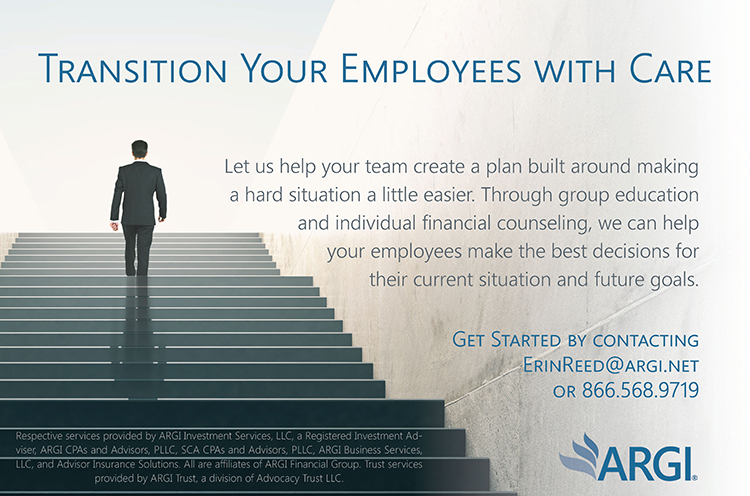By Erin Haynes Reed
2020 has been a hard year on all of us, but for those in HR, this year has been a doozy. Since March, the United States has seen 29 consecutive weeks of mass unemployment. According to the Bureau of Labor Statistics, a staggering 12.6 million Americans are unemployed as of September. Market volatility, economic strains, and the array of issues caused by the pandemic have resulted in workforce restructure and reductions for companies across the nation.
Downsizing is stressful for everyone involved – no employer wants to lose their employees, and no employee wants to lose their job. More often than not, these harsh realities present critical considerations and questions regardless if there are voluntary or involuntary changes. From legal issues, financial needs, and heightened emotions surrounding workforce changes, how can employers ensure these times of transition are handled compassionately while preserving brand reputation for the employees who remain and external company clients?
Like many things in life, to get to where you want to be, you should have a plan that gets you there. With so many moving parts of a workforce transition, outlining your company’s plan is a critical first step in setting objectives and achieving your goals. To ensure you are set up for success, there are several key areas that must be considered before implementation begins.
- ESTABLISH COMPANY GOALS
Mergers and acquisitions, economic declines, or simple cutbacks are just some of the reasons organizations consider layoffs. For many companies, payroll is the biggest expense on the books, so it’s natural that businesses looking to cut costs tend to focus on reducing their workforce. Setting goals will provide the groundwork for what steps must be taken to achieve success. Some items to consider:
- How many employees will this impact?
- What is the number of employees potentially impacted for our company to meet budgetary requirements?
- Which employees will be affected?
- How are we considering those who are leaving and those who will stay after the layoff period has ended?
- What will be included in the separation package?
- Weeks of pay?
- Payout of unused PTO?
- Medical insurance or COBRA?
- Referrals to career placement services?
- Financial counsel at transition?
- Will negotiations be allowed for the terms of this package?
- When will this process begin and when will it need to be completed?
2. VOLUNTARY VS INVOLUNTARY SEPARATIONS
Before letting any employee go, many employers consider utilizing all strategies available prior to cutting jobs completely. One option that has become more common over the past few years is voluntary separation programs. (VSPs). VSPs allow employees to voluntarily terminate their employment in exchange for a benefit or severance package. These programs take the burden off companies preselecting employee terminations and allows employees to separate from the company on their own time.
Additionally, these programs tend to have a more positive spin than an involuntary layoff – consider the Early Retirement Package or Offer (ERP/ERO). EROs provide employees who have met certain, predetermined criteria an offer to begin their retirement early. These packages may include benefits in addition to typical severance packages.
However, if an inadequate number of employees do not participate in the voluntary separation, oftentimes companies are forced to conduct an involuntary reduction in force. RIF programs allow companies to lay off employees but come with many legal and financial requirements
3. INTENTIONAL & CONSIDERATE COMMUNICATION
Effective communication of a company transition is a crucial component in any time of uncertainty. Impacted employees, and those that are staying, will have questions about what this change can mean for their future. Your communication plan will serve as the foundation for expectations of all parties throughout the entire transition process. When thinking about this communication consider the following:
- Rationale for the downsizing
- Precise notification message, including the effective date
- Benefits/severance package details
- Outplacement services if applicable
- Additional resources such as unemployment benefits applications or COBRA
- Outline of next steps
Communication should not stop at the employees impacted by the transition – be sure to include a plan for those that remain. Workplace Survivor Syndrome is a term to describe the emotional, psychological, and physical effects of employees who remain in the midst of company downsizing. An effective, proactive communication plan for remaining employees can alleviate confusion and anxiety, while setting future expectations for the company.
4. PARTNER WITH TRUSTED PROFESSIONALS
Times of transition can bring uncertainty, but HR professionals don’t have to go it alone. There are professionals out there to help guide you and your employees along the way in a variety of capacities. These professionals can provide their knowledge and experience to help support HR teams during these challenging periods.
- Outplacement
- These partners assist the company in termination planning and execution of the workforce transition. Companies that specialize in outplacement services can help you build your plan from start to finish.
- Legal
- Attorneys are crucial resources in legal guidance for the company’s layoff. There are many legal areas surrounding employee rights that need professional insight, and the right attorney can ensure your firm stays compliant.
- Career Transition
- These firms assist impacted employees in career counseling, resume and LinkedIn profile development, interview management and other services to help them transition to their next job.
- Financial Guidance
- Terminated employees may benefit from financial guidance on what their severance package means for their overall financial plan. Look for independent, fiduciary advisors to provide benefits and compensation package decisions and comprehensive financial analysis and advice for the terminated employee whether transitioning to retirement or another career.
There is so much that goes into any company’s workforce transition, and every detail matters when dealing with such a sensitive situation. Financial and emotional considerations can make or break a brand’s reputation during this time. But with adequate planning you can move forward in your workforce transitions with confidence and help to provide some peace of mind for your employees in an uncertain time.

Erin Haynes Reed
Corporate Solutions
ARGI
ErinReed@argi.net
www.ARGI.net

